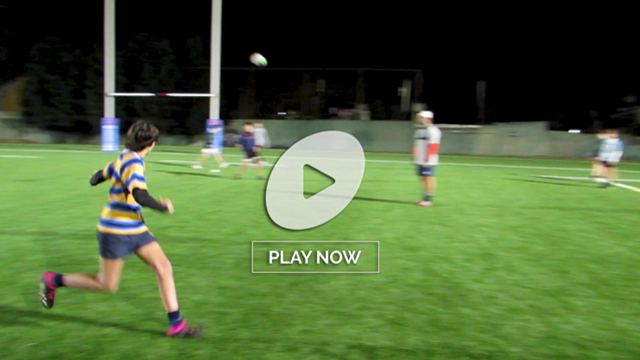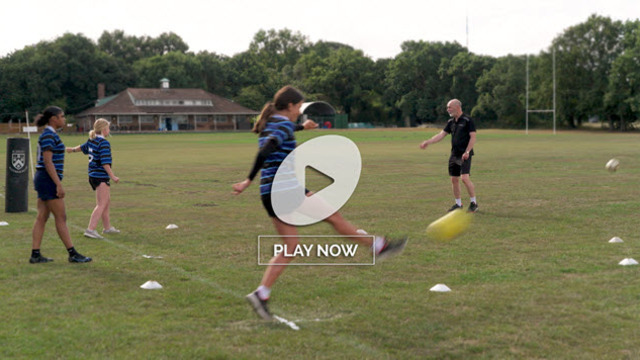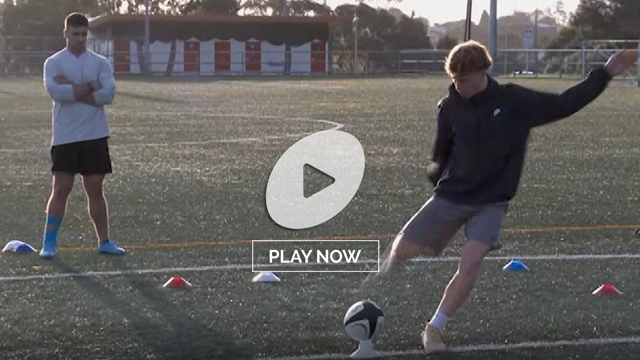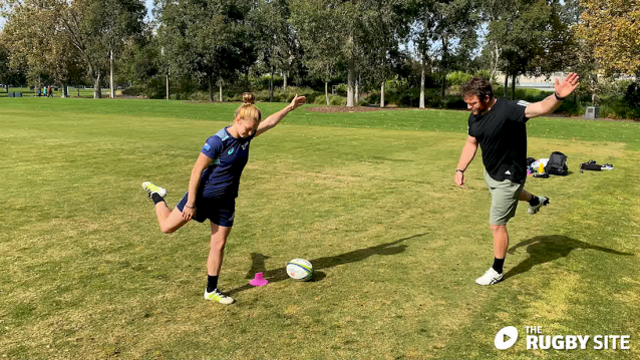How to take your kicking game on an upward spiral
The transition from the amateur to the professional game has been far from an easy one for the game of Rugby. There has not always been a smooth and seamless baton-change of values, either on or off the field.
At the level of individual technique, some ‘amateur’ techniques which still give added value have been prematurely discarded in the professional game. In this earlier article, I examined how the end-over-end, or six o’clock pass could still play an important role in tightening and straightening the attacking line.
Where rolled or overhand spin passes have become the norm in the pro’s, the kicking game has tended to move in the opposite direction, with the accuracy of the end-over-end punt steadily replacing the old spiral kick.
Dan Carter has given a brief precis of the pros and cons of the drop, or end-over-end punt versus the spiral in this short Rugby Site video:
Basically, the end-over-end is for accuracy, but the spiral gives extra length.
In the hands of an experienced operator, the spiral punt can be a deadly weapon. The Exeter and Scotland full-back Stuart Hogg has always stuck by the spiral, even when all of his backfield mates were deserting one-by-one to the drop punt.
The spiral has particular value when it can be used against a relatively open backfield, as these two examples from the 2021 Scotland-England game from the Six Nations demonstrate:
In the first example, there is only one England defender deep in the backfield, so Hogg has a large target area for the spiral punt – approximately half of the pitch, between the far post and the left side-line. In the second instance, it is completely empty, with all of the England back three all positioned near the line after a short attacking kick by Owen Farrell.
The technique used by Hogg in the first punt is the same described by Dan Carter. He holds the ball at an angle of 30 degree in his right hand and kicks through the centre of the ball – there is no attempt to impart extra spin (and lose most of the extra length) by kicking across it. The ball travels about 75 metres to the far corner, and about 80% of that travel is accomplished as the spinning ball burrows through the air.
The second technique currently making a comeback is the so-called ‘spiral bomb’. The spiral bomb has been around for 40-50 years but has recently been conscripted with notable effect by England number 10 George Ford in the Gallagher Premiership.
The former England defence coach of the 2003 World Cup winning team, Phil Larder, first came across the technique through contact with Dave Alred. Alred was a kicker for the Minnesota Vikings who later became a top kicking coach in rugby, and an advisor to some of the world’s top golfers.
Phil described to me how Dave Alred would kick a spiral punt high into the sky, with a hang time of at least four seconds. The ball would turn over at the apex of its flight, and fall back down towards the earth in an unpredictable circular pattern, drifting and swirling as it descended. It tended to drop about two or three metres ahead of the spot where the receiver anticipated it would land.
Anthony Watson is one of the most reliable kick receivers on the face of the planet, but he struggled to cope with George Ford’s spiral bombs in an early season encounter between Bath and Leicester. He was only able to catch two of the seven bombs which the Tigers’ fly-half sent his way cleanly:
The second example shows a similar preparation for the kick by Ford to the spiral punt by Hogg – the ball is held out in front on a level plane, at no more than a 30-degree angle. The foot goes straight through the centre of the ball and the spin is imparted naturally in the process. There is no attempt to kick across it, or off the side of the foot.
When the ball drops, it comes down in a space ahead of where the receiver thinks it will land, and therefore closer to the chaser:
Summary
The spiral punt is one of the techniques from the amateur era which deserves to be saved in the modern game, even though it is an increasingly rare bird. Stuart Hogg has proven the value of the extra length it imparts when kicking into a thinly-populated backfield, while George Ford has caused much consternation among Gallagher Premiership full-backs with the unpredictable flight of the spiral bomb. Spin still has a place in the modern kicking game.












